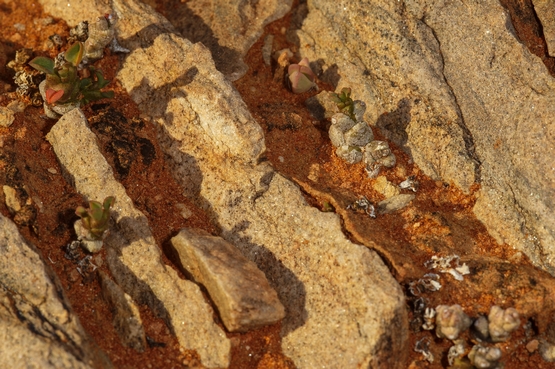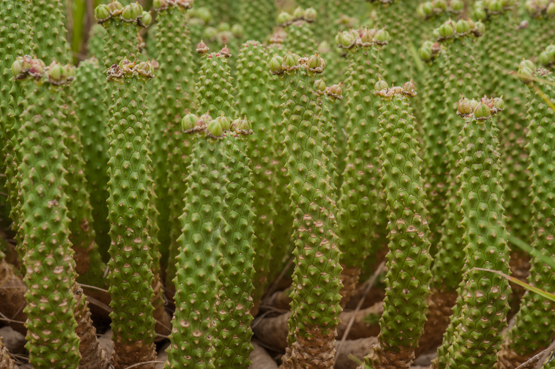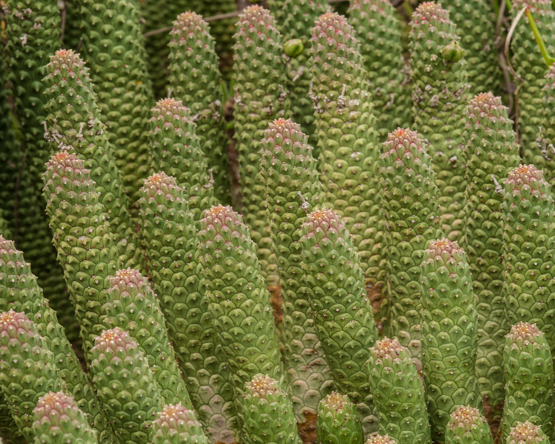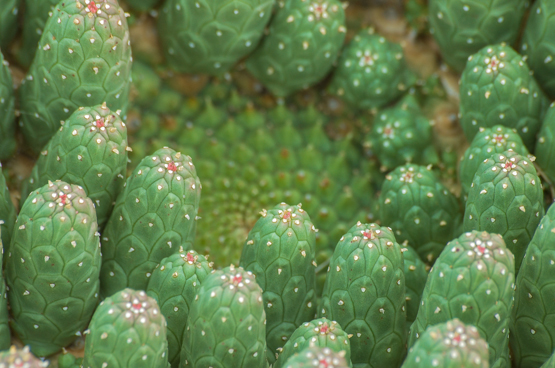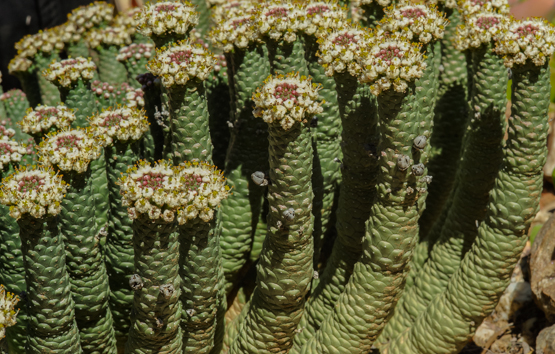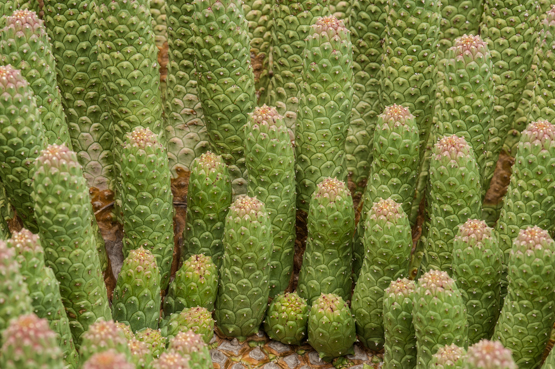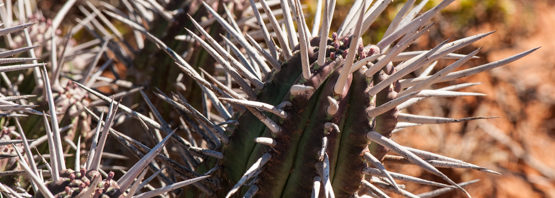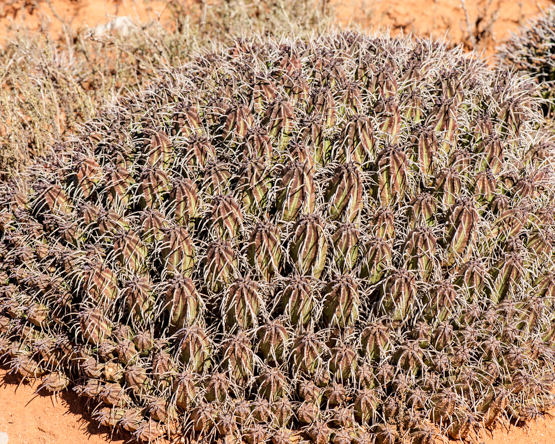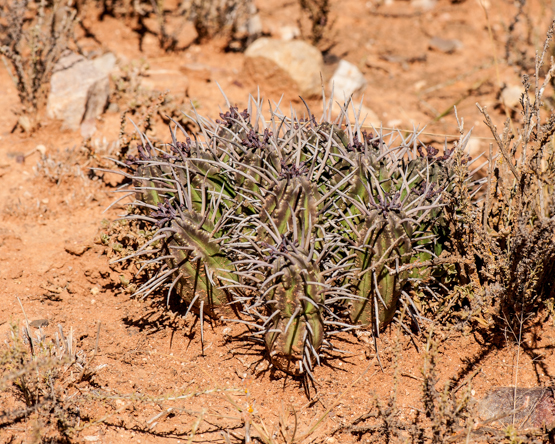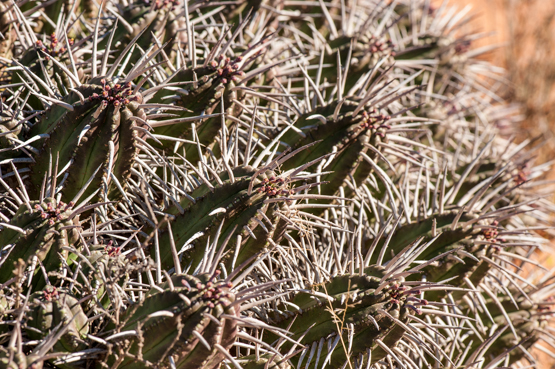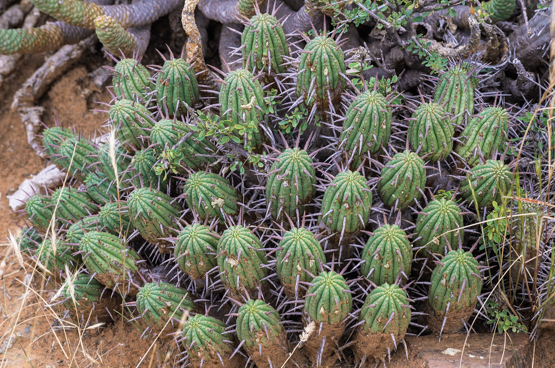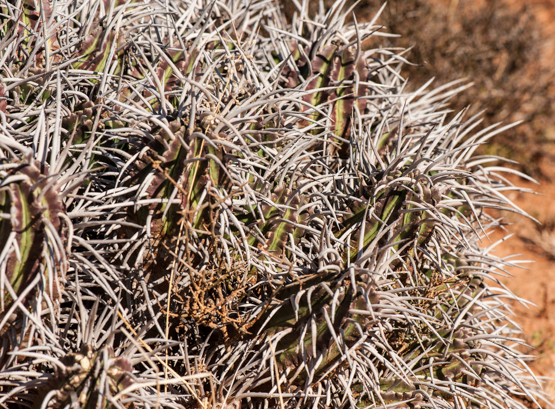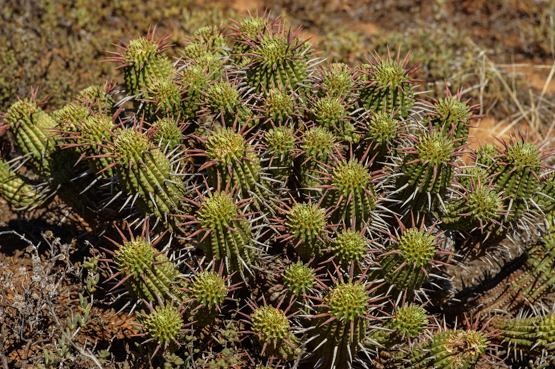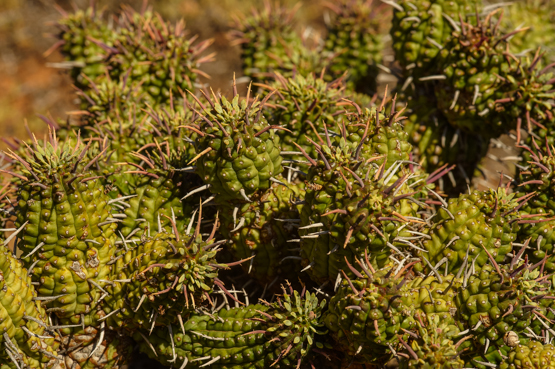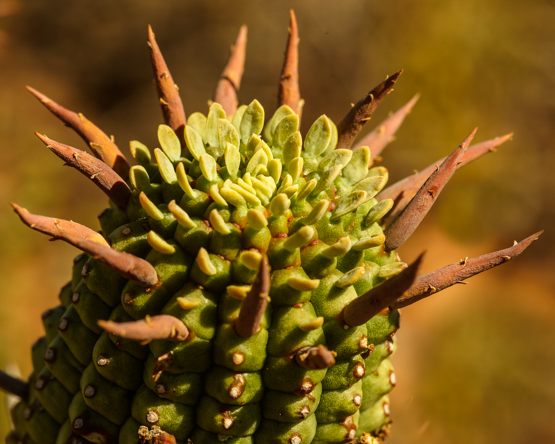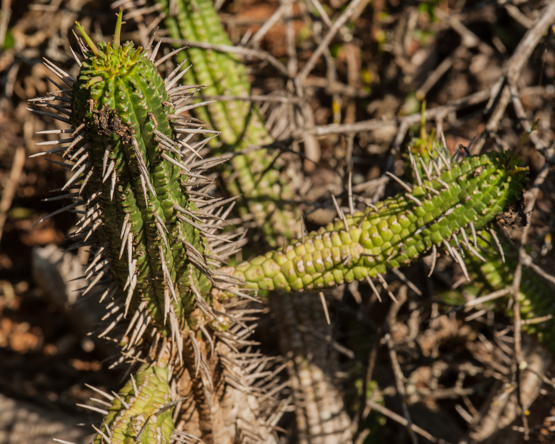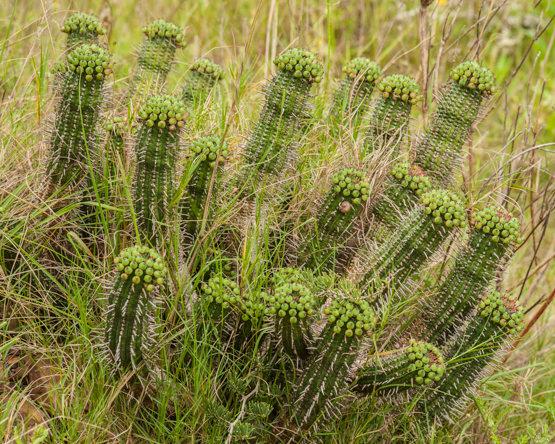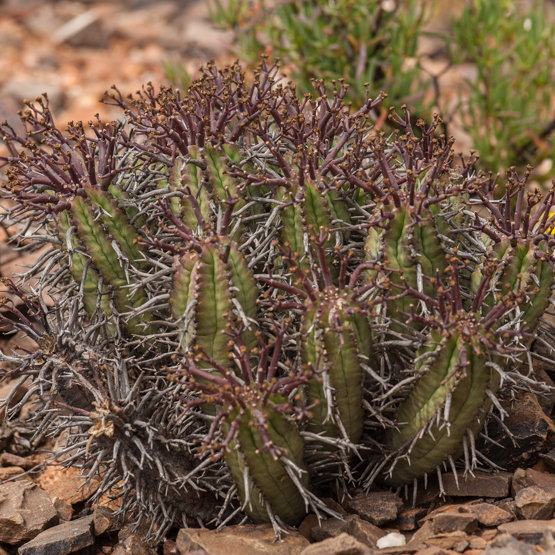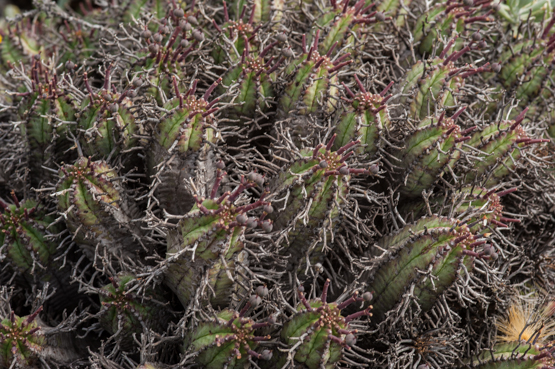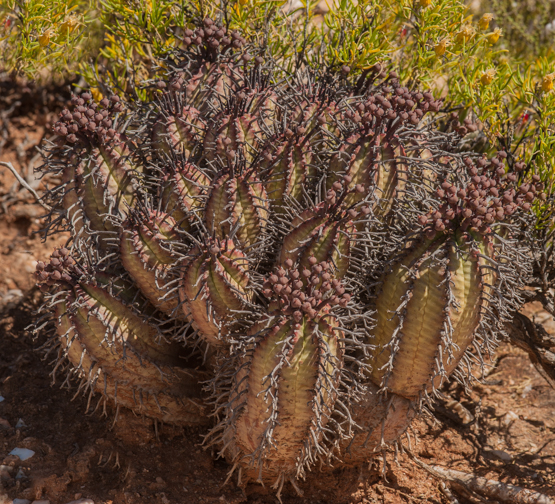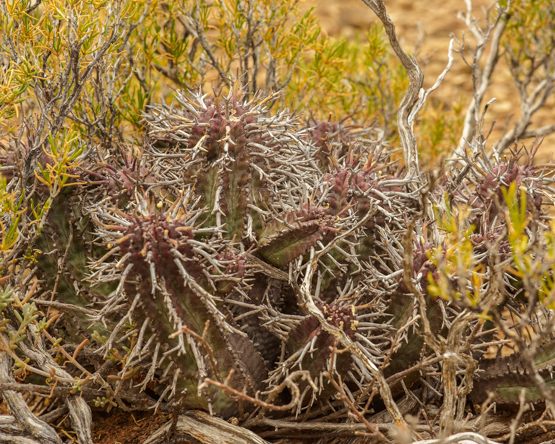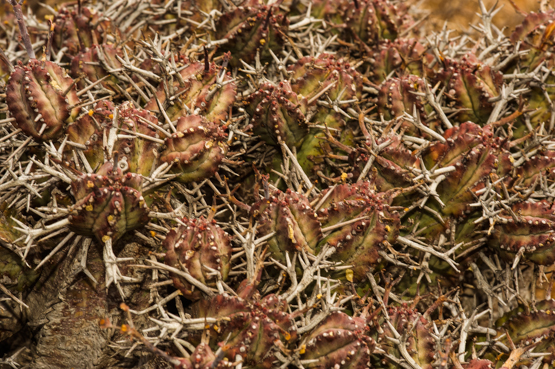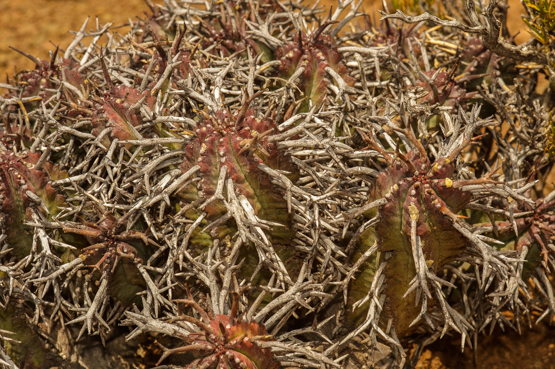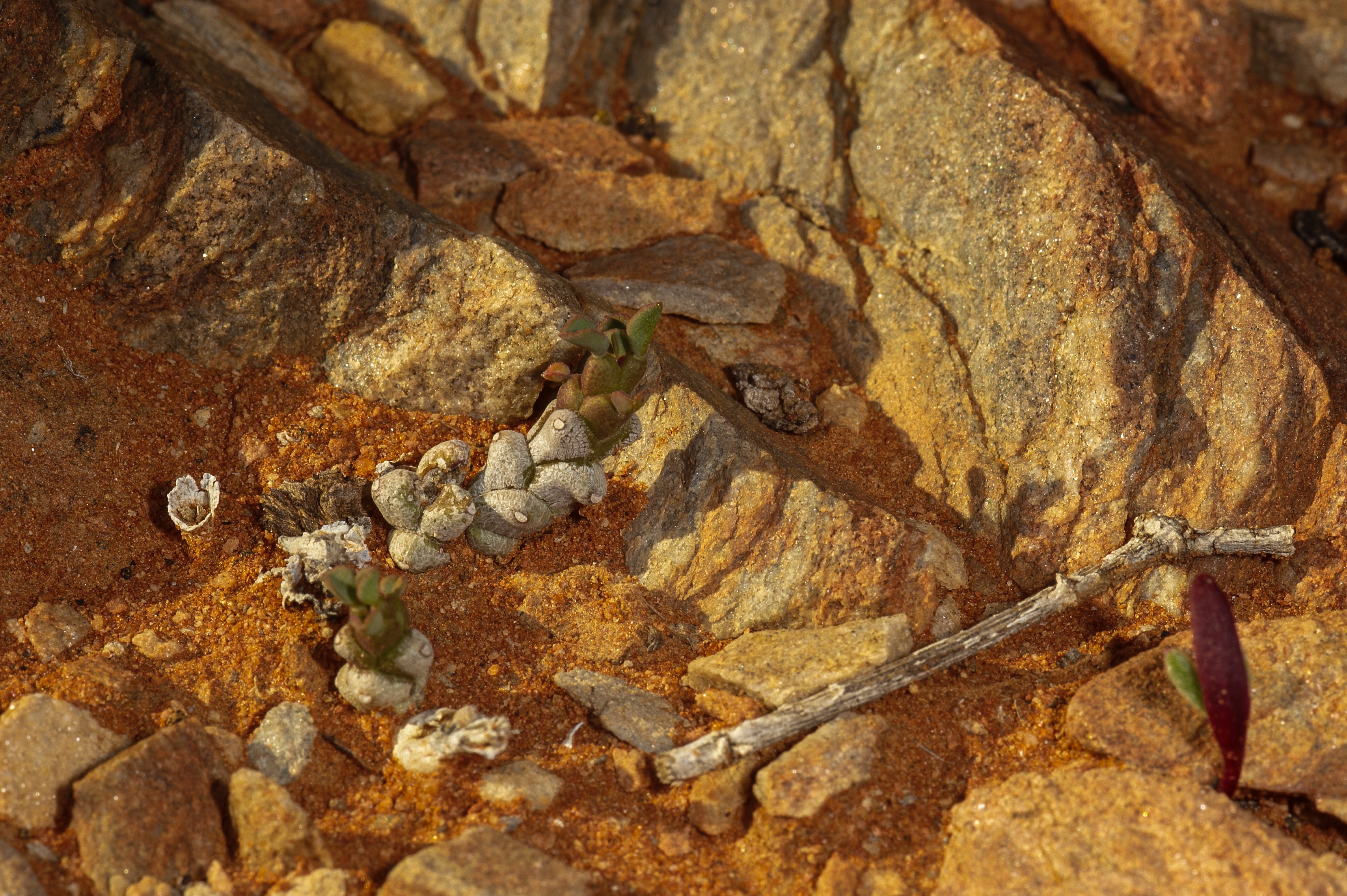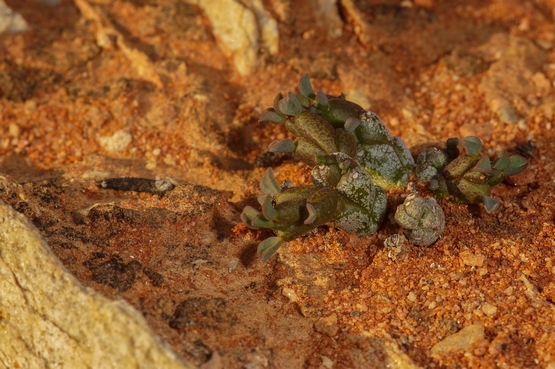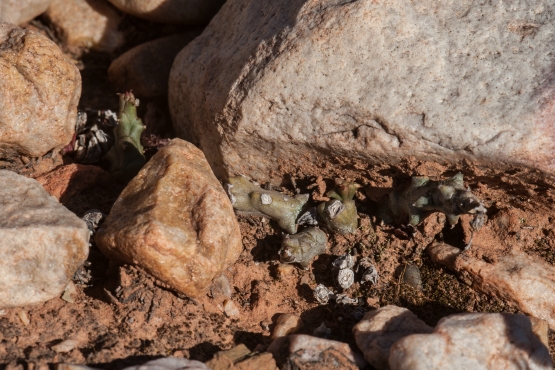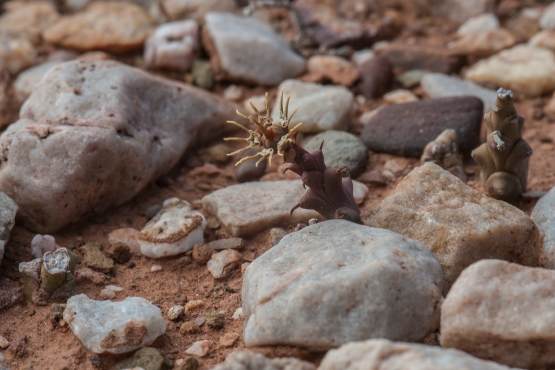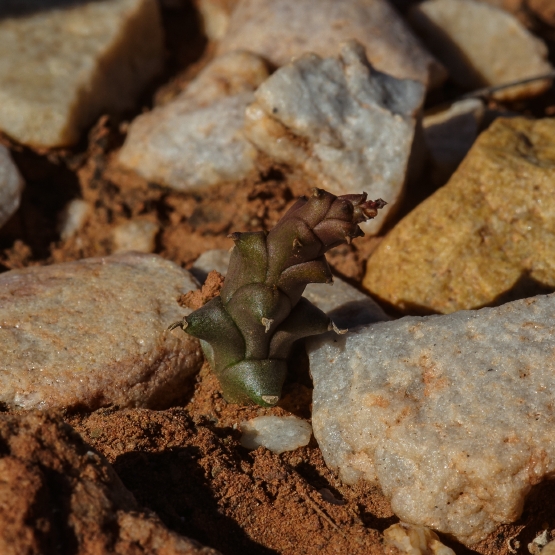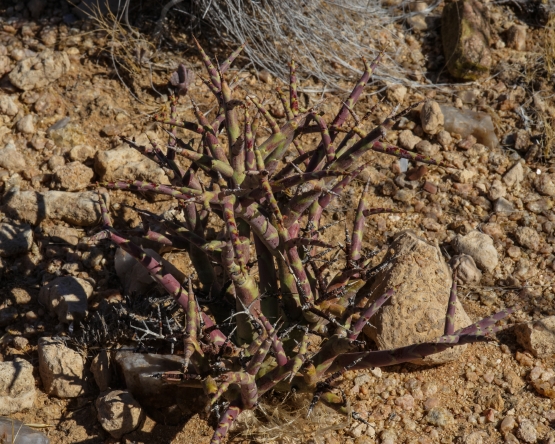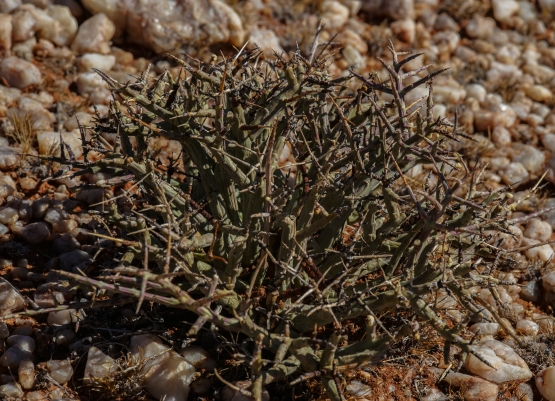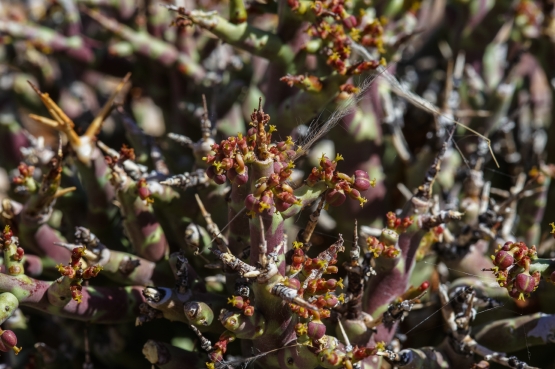Tag: Euphorbiaceae
Euphorbia esculenta (1)
Of the about 30 species of the so-called medusoid group of Euphorbias, this is one of the biggest, sometimes reaching a metre or even more in diameter (including the branches).
It is very common over a large area stretching from the dry sandy plains east of Addo, northwards as far as Graaff Reinet and southwestwards towards the Baviaanskloof and the eastern border of the Little Karoo.
When the substrate is very hard, the main body is pushed above ground.
The name esculenta means “edible”, because the plants can be used as fodder in times of drought.
The flowers with their white woolly bracteoles give off a pleasantly sweet scent.
Euphorbia ferox (2)
Euphorbia ferox (1)
Plants of this species form clumps up to 15 cm tall and about 60 cm in diameter. The name refers to the armour of strong, usually straight, spines, which may be up to over 3 cm long.
The plants are found on flats and rocky outcrops from the western Great Karoo to Graaff-Reinet and Steytlerville, often in great numbers.
Euphorbia mammillaris
The original E. mammillaris was known to occur from the Riversdale district in the west to the Oudtshoorn area in the east. The plants growing there look like the ones in the first 3 pictures.
Pictures 4 and 5 show plants from near Port Elizabeth in the Eastern Cape. They represent what used to be called E. fimbriata, with rather narrower and more sinuous stems. This habit is an adaptation to the growing conditions there: a dense cover of bush or grass as opposed to the open habitats in the west.
Euphorbia pillansii (2)
Euphorbia pillansii (1)
On seeing plants of this species for the first time, one would be excused for thinking they belong to E. stellispina (see earlier post). E. pillansii is smaller (up to 30 cm tall instead of up to 50 cm or more) and the stems have fewer angles (7-9 compared to 10-16). The plants are either male or female and occur sporadically from Ceres to Vanwyksdorp in the Little Karoo on stony, clayey soils.
The pictures were taken 7 Febr. 2009, west of Ladismith.
To be continued.
Euphorbia celata
Most of the biomass in these plants is underground. Graham Williamson in his beautiful book “Richtersveld; the enchanted wilderness” has the following to say: “E. celata is a curious Namaqualand endemic which makes up for its lacklustre appearance by its botanical uniqueness. It grows almost secretly in hidden cracks in orange sandstone and is very difficult to detect.”
Plants photographed near Lekkersing 12 July 2011.